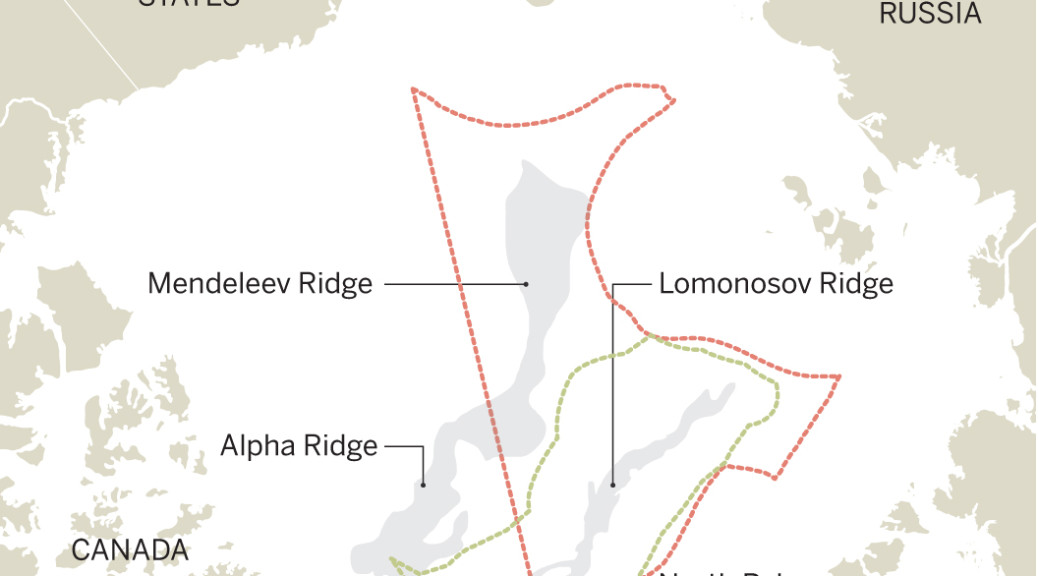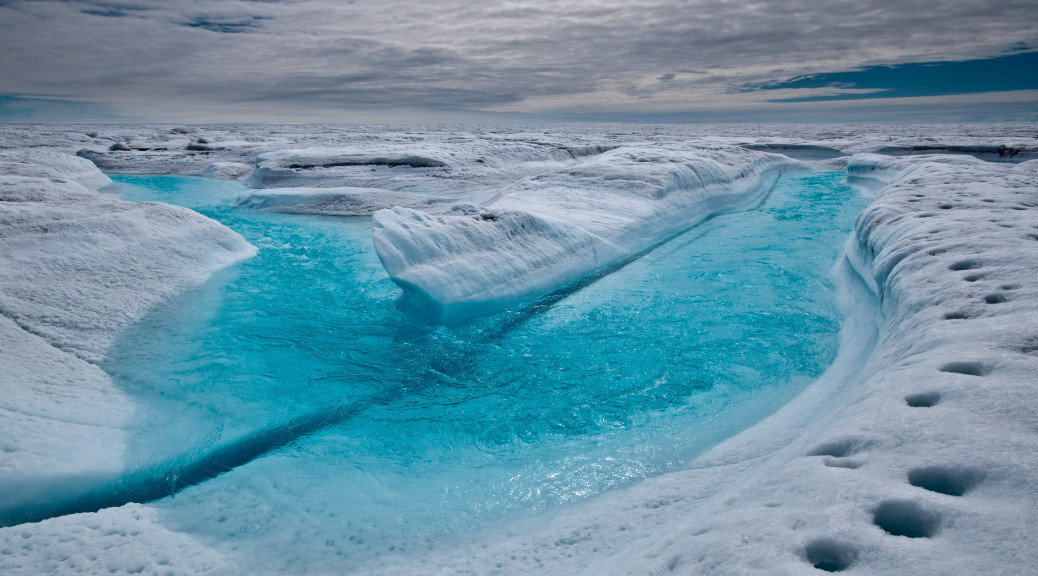Where there’s oil, there’s a way. This summer the federal government showed that it is willing to approve drilling operations in U.S. waters off Alaska. In addition to legislation, other barriers to Arctic development are disappearing: summers at the North Pole could be ice-free as soon as 2020, reducing the need for ice-breaking vessels and opening the way for faster and cheaper trading routes. An increase in shipping across the top of the world, however, could have “significant regional impacts by accelerating ice melt,” according to a recent government report by the Canadian Northwest Territories. And that aggravated melting could raise global sea levels. Continue reading A Sooty North Pole Ahead
Tag Archives: Planetary science
Russian claim heats up battle to control Arctic sea floor
A long-simmering struggle over who owns the Arctic sea floor intensified last week, as Russia submitted an updated territorial claim—together with new seafloor maps and samples to support it. Russia’s claim to an additional 1.2 million square kilometers of seabed near the North Pole sets up a potential clash with other Arctic nations. Denmark has asserted ownership of part of the area claimed by Russia, and Canada is also expected to file an overlapping claim.
The competing submissions represent “a battle of the countries’ ambitions” to control the Arctic, and an effort to capture “the North Pole brand,” says geophysicist Nina Lebedeva-Ivanova of the University of Oslo. And they are sure to fuel technical debates, because the United Nations Convention on the Law of the Sea (UNCLOS), which entered into force in 1994, links territorial claims to the fine points of under sea geology.
Continue reading Russian claim heats up battle to control Arctic sea floor
Tailpipe Study: Newer Trucks Emit More Black Carbon
A new pollution study in Europe using a van to chase other vehicles and measure their tailpipe emissions finds that newer, diesel-fueled, heavy trucks and buses emit, on average, 34% more of the health and climate hazard known as black carbon than older vehicles of the same types.
Continue reading Tailpipe Study: Newer Trucks Emit More Black Carbon
Building a Better Glacial Speedometer
Greenland is the land of escaping lakes. In the summer, when soot lands on the ice sheet’s snowy surface and the Sun begins to melt the snow, bright blue lakes form on top of the ice. Just as on land, the water seeks a way down.
Sometimes, instead of carving surface channels, water trickles into the ice sheet through crevasses and vertical shafts called moulins. In the most dramatic cases, a lake can burst through a kilometer-thick ice sheet and rush to the bottom of the glacier in a forceful waterfall. There, under high pressure, water may help the glacier glide a little faster over the rock below.
Just how fast, however, is the subject of an ongoing debate. Continue reading Building a Better Glacial Speedometer


